We are very curious to know if you can remember the first dress or product you designed, how old you were, and what it was like?
The first costume of this kind I designed was an interpretation of a baroque silhouette, part of a school assignment. The students were supposed to construct a garment using unconventional materials, with the common result being a large accessory more than ‘clothes’ per se, with wearability throughout the whole body being the most definitive goal. I know a few knitting techniques, so as we weren’t able to use fabric, I decided to construct my material out of discarded plastic bags rather than purchase or collect random elements, giving me also the possibility to create something with the requirements I decided or taking advantage of the material itself and the new one created once knitted.
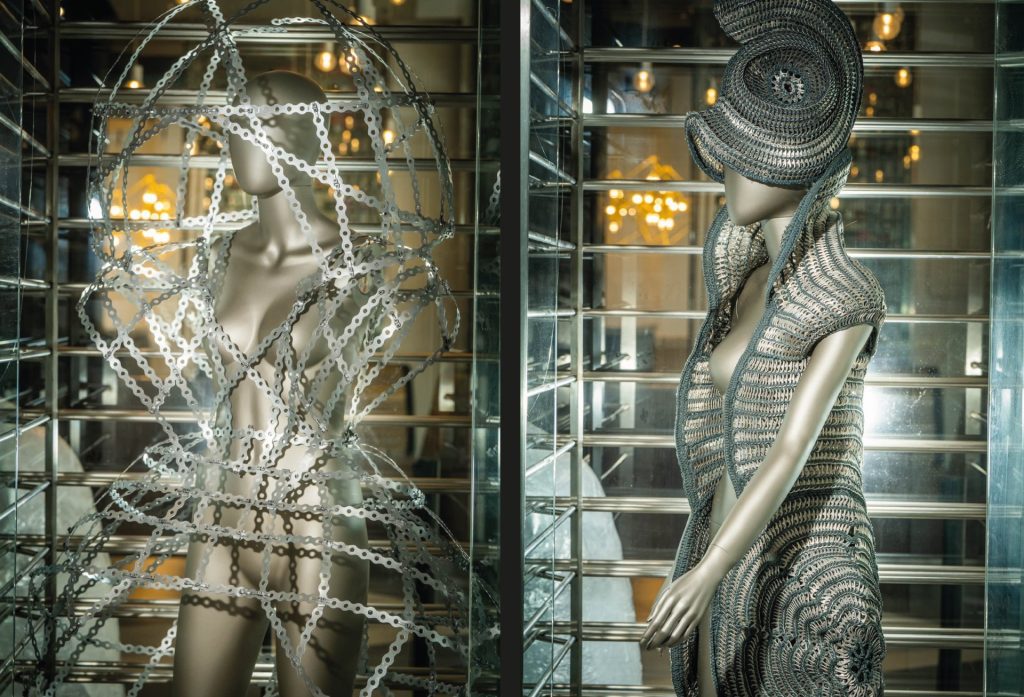
Your pieces are considered “Wearable Installations” that incorporate fair and ethical principles of sustainability, including reuse, Repurposing, Remaking, and Creating Zero Waste. When did you set out on this path? Is it something that you’ve always wanted to do, or was there a life-changing moment, an event, or a realization that made you completely change focus and pursue the impact-driven path that you’re on now?
I was in my third year of university, and I was 26 years. I believe in a sort of karma, causality, subconscious wisdom, or emotional intelligence that sometimes places us, through the course of our lives, on a non-planned path. My experience was to end up studying design unexpectedly. At first, scarcity was an issue so it felt obvious to find free materials, later the lack of money to purchase fabrics combined with previous successful projects made a natural strategy and part of the statement, the fact of creating something beautiful out of garbage, or obsolete materials that would end being part of the massive pollution of a society leaning relentlessly to unsustainable consumerism.
The fashion industry is one of the biggest polluters and the biggest example of excessive and non-stop mass production, whose sole purpose is to be consumed rather than serve its utilitarian objective. An undeveloped country can be a discouraging environment for an industrial designer and becomes a challenge due to the obstacles of an under-equipped and almost nonexistent industry. I began to work for audiovisuals, video clips, short films, commercials, and cinema as a costume designer and art director, and the set decoration was an additional narrative version of interior design.
The audiovisual industry, as well as theatre, became the art scene where I could work as much as I multitasked, keeping me thinking outside the box and recycling and upcycling, with sometimes even superior results regarding aesthetics. Working for theatre kept me creating this sort of character, with an increasing theatrical scale and dramatism, in which the material becomes the leading role. To summarize, in a way, it just happened as I became more aware of the process itself, and the messages transmitted by the result, which eventually led to more powerful pieces.
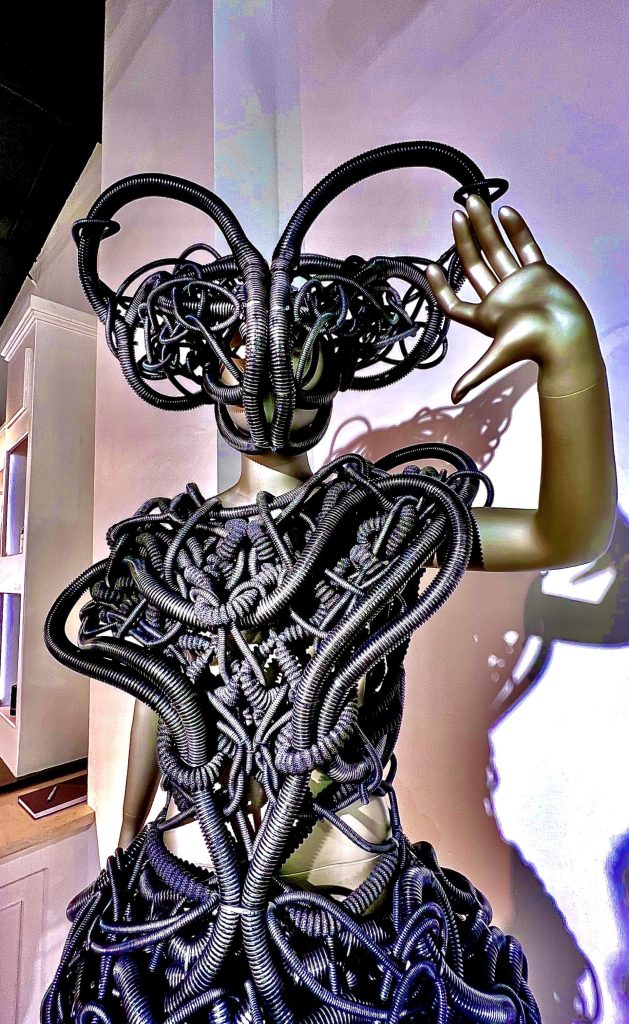
How has your artwork evolved or changed through the years?
For me, evaluating my process is difficult, and at the same time, it becomes an obstacle to overcome through the conscious exercise of the task. Whether successful or objectively accomplished, I can only say that, as organic and extravagantly laborious ideas, they became a statement. The construction, the act of creation, guided by the material and its properties, became the muse of each piece. I stopped sketching at some point and let myself be driven by the potential offered by the material or the object I was working with, rather than being self-mutilated by a written-in-stone idea, crossing the threshold to a never-disappointing world of experimentation. Embrace the mistake and allow the materials to flow using them more efficiently, whilst they become something they were not created for, or acquire new properties, just letting myself go, is something slowly discovered and accepted as a unique feature of the pieces. Before, I had a more naive approach, but more self-awareness and time have made me enjoy and be fulfilled with the act of creation and exploration processes, regardless of the result.
It is an acceptance I have made peace with, by doing so. Is hard to deconstruct something that is more a feeling for me. Introspection, alienation, and loneliness permeated by the desire for constant connection, as a dialectic core that drives the creative process and life itself. This is an inseparable part of the constant exploration of materials and imagined silhouettes, which take on a life of their own and decide their path on the object imagery.
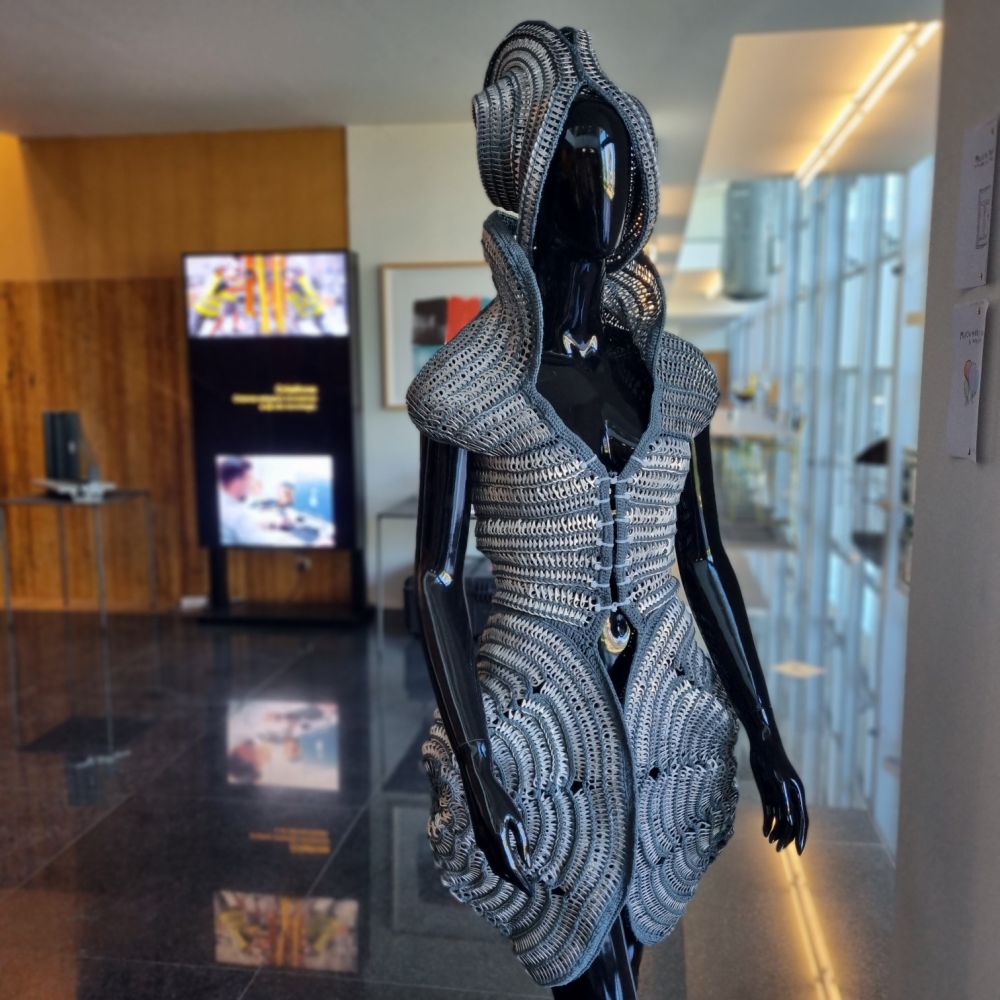
A peculiar conversation with Celia Ledon
You have been invited to exhibit your work in numerous galleries. Do you recall an exhibition or piece as most remarkable or that has a special significance to you compared to all the rest?
I especially recall the 2018 exhibition at the Kennedy Center, part of the Festival Artes de Cuba. They asked me to create a big format installation, which I had never done before. I decided it should be a ‘garment’ as well, I could have done a different (abstract or not) object, but costumes are what defined me at the time as well. So, I created a piece with a variety of materials: rubber, tape-recorded, discarded fabric, and foam. The piece measured 5 meters, and I called it ‘Little Black Dress,’ as it was inspired by the cocktail dress from the 1950s. Besides being my first big-format installation, it was also notable that people could enter, and inside, they could find an actual little black dress. This had an unimaginable significance to me because I learned that the relationship of the receptor audience with a garment is an entirely different thing. It can be compared to any other art piece. I guess that at some level we are ‘too close to clothes’, and ‘style’ ourselves is something we do every day, so that would have been invaluable if I could foresee this and filmed it.
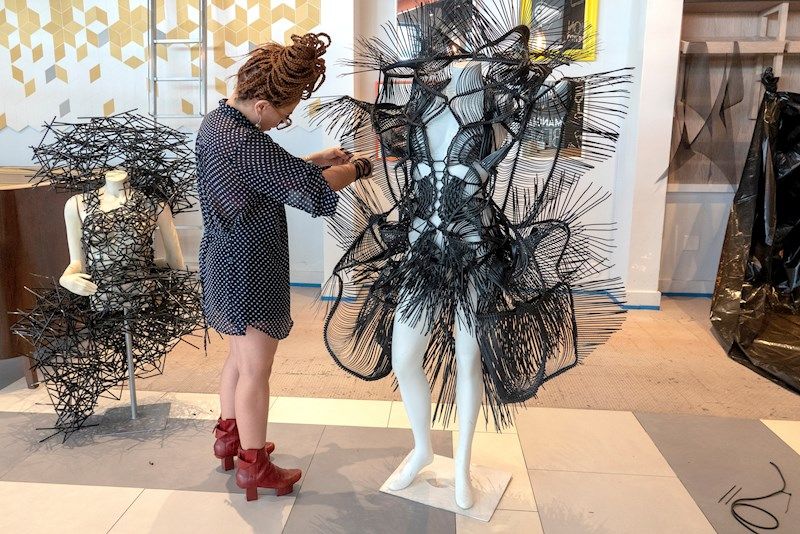
A peculiar conversation with Celia Ledon
What are your biggest aspirations?
I mainly wish to be able to create non-stop, because having the possibility of exploring and experimenting with the creative processes is something that I value the most. Also, the call to action for sustainability and its message, mainly contained in the pieces themselves, and their special way to broadcast their contents is also something I hope to accomplish and make an impact on this matter through my work.
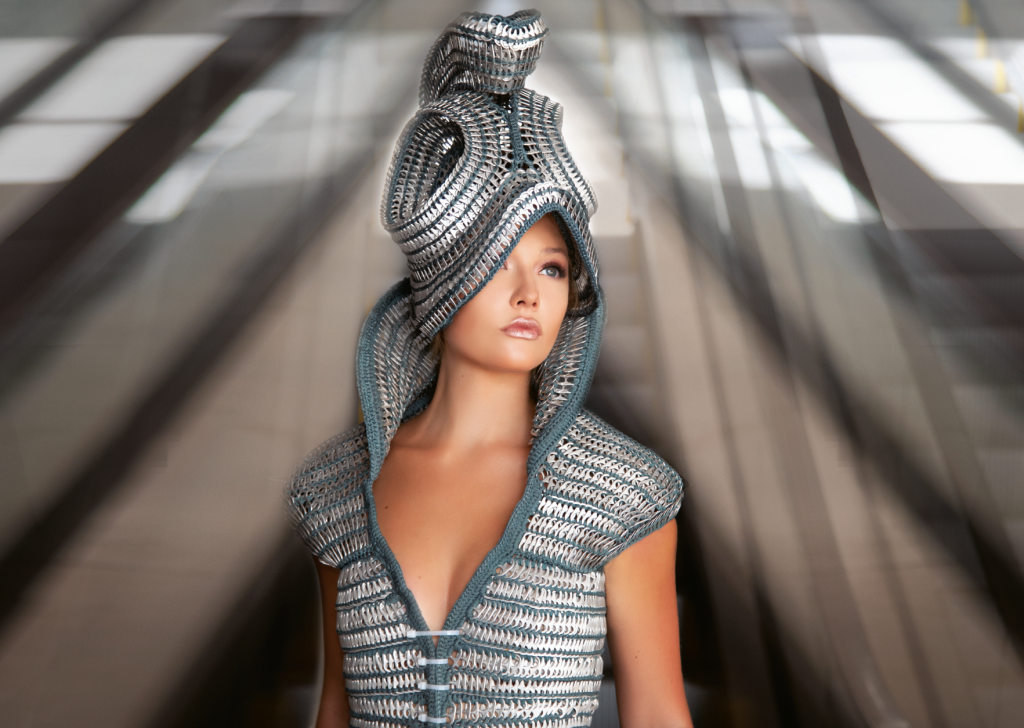
A peculiar conversation with Celia Ledon
Are there any new projects or exhibitions on the horizon?
As for new coming exhibitions, I can honestly say I don’t have the slightest idea about projects. I honestly think I won’t have a lifetime long enough, even living for too long, to do everything I would like to do.
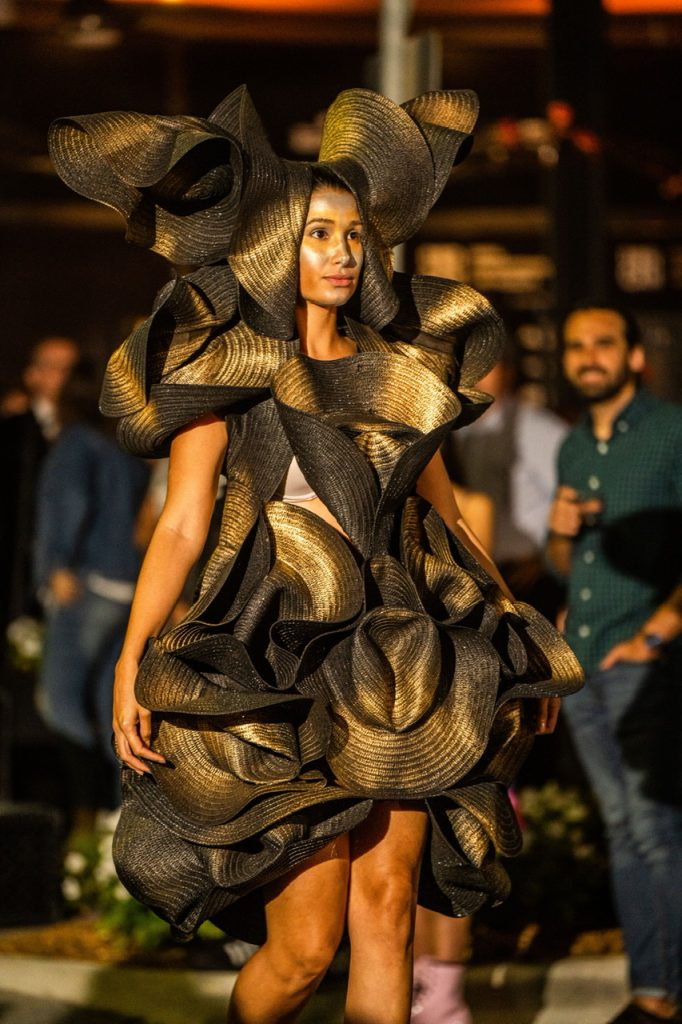
© Roger Davis
Could you share a bit more about your creative process and how you source materials for your projects and pieces? And how does this process of transforming the source materials into artwork work?
Each piece is a statement, narrating the oppression of fashion as a systemic representation through its inexhaustible cycle of irrational consumption, extravagance, and terrifying beauty. The study of theatricality as a stage of representation is the perfect niche for this kind of character who speaks about themselves both on mannequins, as well as in their most performative action, if they are placed on the body as a neutral stage.
Aggression to the body, hieratic; represented with a variety of materials, they contribute to the discourse from the dichotomy embodied by the object of desire, sustainability, and its true commercial value.
Reuse, recycling, and the use of obsolete and discarded materials are interwoven in the pieces with different manual techniques, creating different layers of interpretation and opposing concepts that generate varied semantic pairs, such as ‘the industrial’ and ‘the manual’ as a basic example, ‘the everyday’ and ‘the extravagances’, ‘the whole’ and ‘the part’, ‘the man’ and ‘the object man’.
